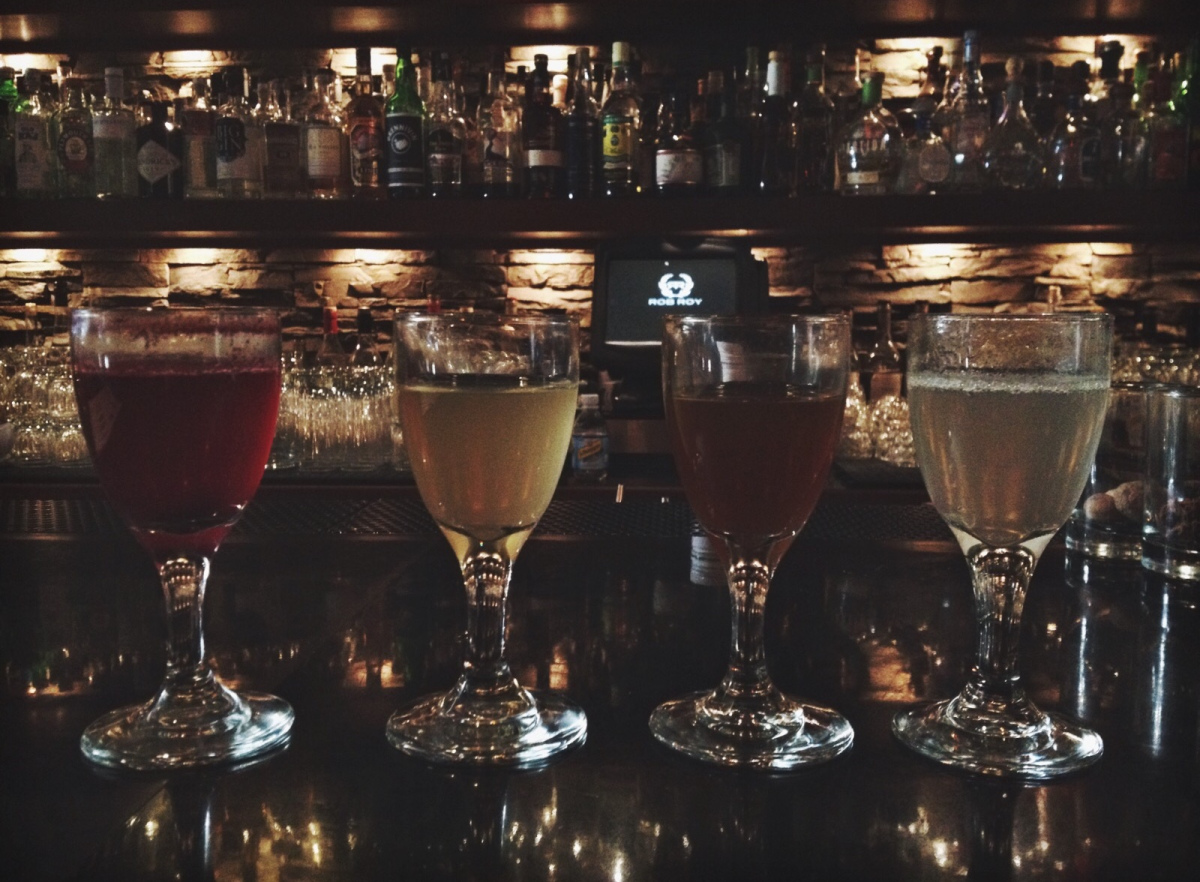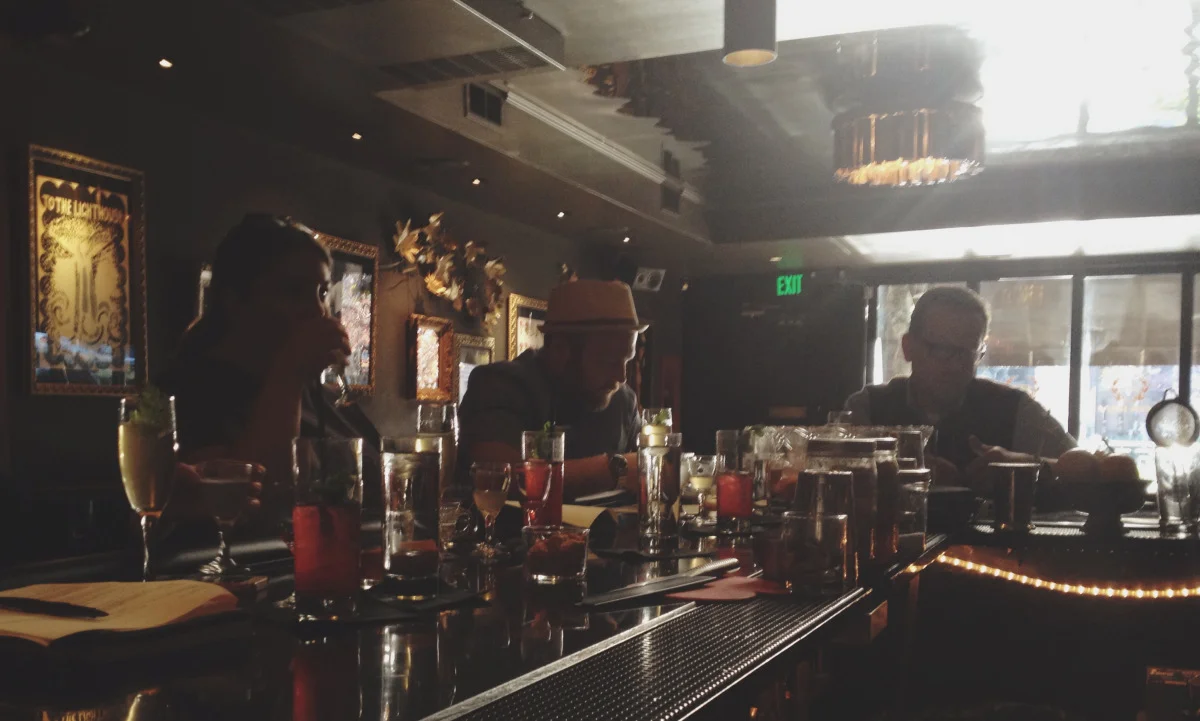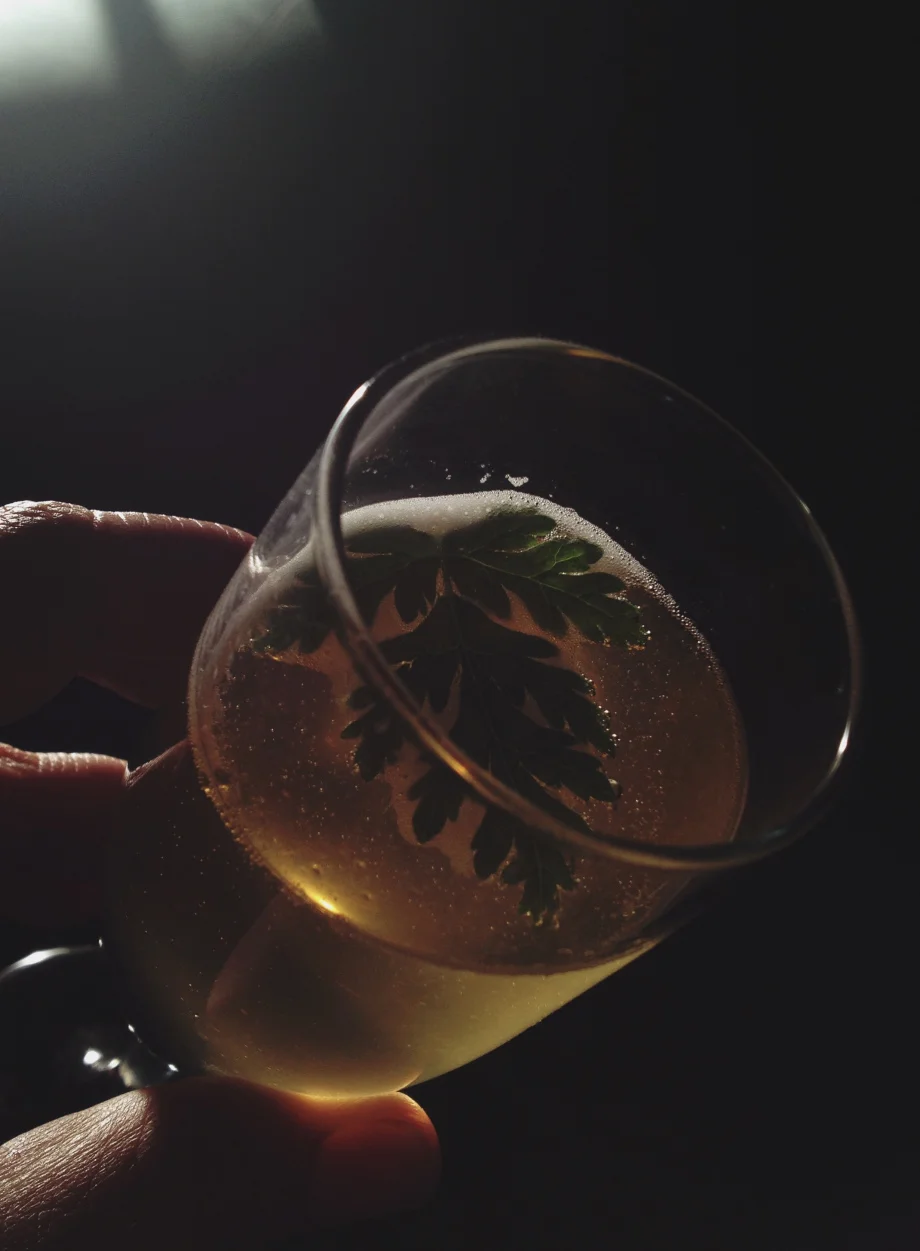Swig Well Shrub Class / Recipes
Happy New Year! Slow Food Seattle is back after the winter holidays, and we're kicking off 2015 with a look back at our November shrub class with Swig Well. We've included a couple of delicious recipes from that class, too!
If you have been reading our site and newsletter in the past year, you know we’ve had shrubs (aka drinking vinegars) on the mind for a while. We like them because they are delicious, of course, but they have a special significance for Slow Food as they are in our Ark of Taste as a product of historical significance deserving of celebrating.
Foods and drinks are typically put in the Ark as they are “on the verge of extinction,” but we’ve been fortunate to see the shrub experience a resurgence of popularity in the cocktail community in recent years.
Therefore, it seemed like an excellent idea for us at Slow Food to partner with Anu Apte and her cocktail school Swig Well. We decided to offer a shrub class focused on how to make them and then use in mixed drinks. (Not a tippler? Still read on as they make an excellent non-alcoholic beverage option, too.)
On a mid-November afternoon, a dozen students met up at Rob Roy for our class, where they were welcomed with a festive punch of apple shrub, aged rum, citrus peel, and sparkling rose, with sliced persimmons floating on top.
Our class was a perfect mix of the cocktail community and Slow Food fans. We were especially happy that several attendees had signed up without even ever having a shrub before. We love those kinds of adventurous and curious people!
We started with a Slow Food review of the history of shrubs and a demo by me (with help from the students) to show how you can put together the basis for a simple apple shrub in just minutes: just shred or matchstick the apple, add some sugar and shake it up, and you’re on your way.
From there, we turned things over to the professional. Courtney Matzke, a local bartender, plant science student, and fermentation enthusiast, walked us through additional shrub recipes and mixed drinks to make with each.
We sampled each shrub straight with a bit of soda water (this simple preparation is an excellent non-alcoholic drink all on its own), and then in one of Courtney’s cocktails.
Courtney made an herb and honeydew shrub, then used it in a “Sundew” cocktail with pear cider donated by Finnriver. (We at Slow Food were especially happy to see that as we had a farm visit to Finnriver back in the summer of 2013.) This shrub was my personal favorite, with the herbs adding a note of sophistication to the bright sweetness of the melon.
Courtney also made a simple marionberry shrub, which she used in a gin-based cocktail she called “Meadowlark.”
And last, one of the most interesting and complex shrubs made with raisins, sarsaparilla and molasses. We called this one a switchel, for a relative of the shrub that was frequently drunk in colonial times. Switchels usually had ginger and molasses, and due to the potassium content of those and the raw apple cider vinegar used to make it, the switchel can be considered, I think, the Gatorade of Colonial times, perfect to replenish minerals after a hot day.
Courtney made a cocktail she called the “Dogbane” with the switchel. (All her drink names were inspired by plants.) The Dogbane featured bourbon, the switchel, Angostura bitters, and China China (an aperitif made with bitter and sweet oranges and herbs).
In addition to the method used for these specific recipes, we also spoke about general techniques for shrub making, including the various possible methods (hot, cold, fermented) and variations on the main ingredients (how to use other sweeteners, why Courtney prefers raw coconut vinegar for most recipes, etc.). Courtney also walked us through basic bartending techniques (like when to shake, when to stir, and why it matters).
On the Slow Food side, I also covered a bit of one of my pet topics – kitchen efficiency and food waste – to talk about ideas for using the fruit after it’s been used to prepare the shrub.
[caption id="attachment_2246" align="alignright" width="300"] Shrub class gift bags[/caption]
The students seemed to come away inspired by the nearly endless possibilities for shrubs and the ease with which one can put them together. (We were all especially intrigued by bartender Brady’s thoughts on making a pumpkin shrub for the holidays.) They also left with a recipe packet and gift bag featuring a sample bottle of each shrub and bottle of Finnriver’s pear cider.
We really enjoyed doing this class, and we’re in conversations with Anu and Courtney about repeating the class in the spring with new recipes featuring seasonal produce. We’re even thinking big about incorporating a partnering cooking demo for uses for the shrub fruit. Stay tuned as we’ll have more about that in 2015!
In the meantime, Courtney was generous enough to offer the below two recipes if you would like to give shrub-making a try this season. Or, if you’re a seasoned shrubber, considering adding this one to your repertoire! We also recently shared our recipe for apple shrub and Courtney’s punch recipe with our fellow fruit lovers over at City Fruit. Check out their blog for those.
Herb & Honeydew
Yield ~14 ounces
2 cups chopped honeydew
2 oz fresh herbs (winter savory, basil, etc.)
1 cup raw or unbleached sugar
1 cup coconut vinegar
Combine sugar, chopped cantaloupe and fresh herbs in a bowl and stir to coat fruit with sugar. Allow to sit at room temperature (covered with cheesecloth) for a few hours, then move to refrigerator for 1 day. At this point, a significant amount of juice should be drawn form the fruit. Strain the solids from the liquid and pour into a glass container. Add the vinegar to the liquid and shake to combine. Store in refrigerator.
Sundew
.75 oz honeydew shrub
Pear cider (we used Finnriver)
Fresh herb
Pour chilled shrub into flute. Top with pear cider & fresh herb leaf.



